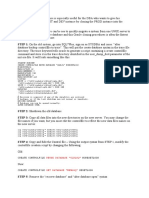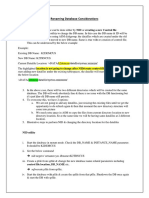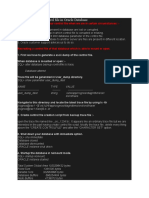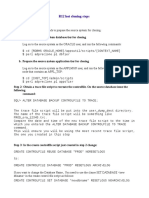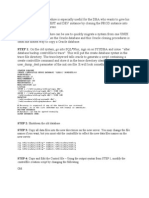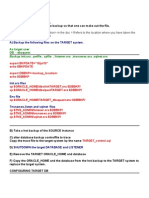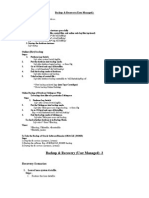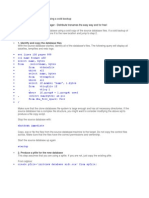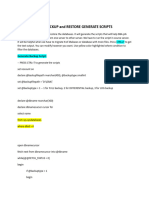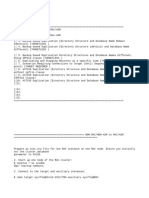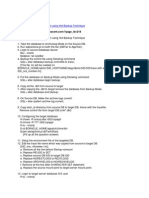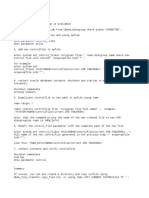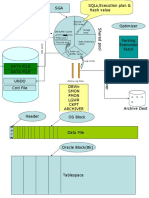0% found this document useful (0 votes)
34 views2 pagesSteps To Convert Your Oracle Database From FS To ASM
The document outlines the steps to convert a file system to Automatic Storage Management (ASM) in an Oracle database. It includes commands for setting control files, creating backups, switching to ASM, and managing log files. The process involves using RMAN for restoration and configuration adjustments to ensure the database operates within the ASM environment.
Uploaded by
emirvallejoCopyright
© © All Rights Reserved
We take content rights seriously. If you suspect this is your content, claim it here.
Available Formats
Download as PDF, TXT or read online on Scribd
0% found this document useful (0 votes)
34 views2 pagesSteps To Convert Your Oracle Database From FS To ASM
The document outlines the steps to convert a file system to Automatic Storage Management (ASM) in an Oracle database. It includes commands for setting control files, creating backups, switching to ASM, and managing log files. The process involves using RMAN for restoration and configuration adjustments to ensure the database operates within the ASM environment.
Uploaded by
emirvallejoCopyright
© © All Rights Reserved
We take content rights seriously. If you suspect this is your content, claim it here.
Available Formats
Download as PDF, TXT or read online on Scribd
/ 2

